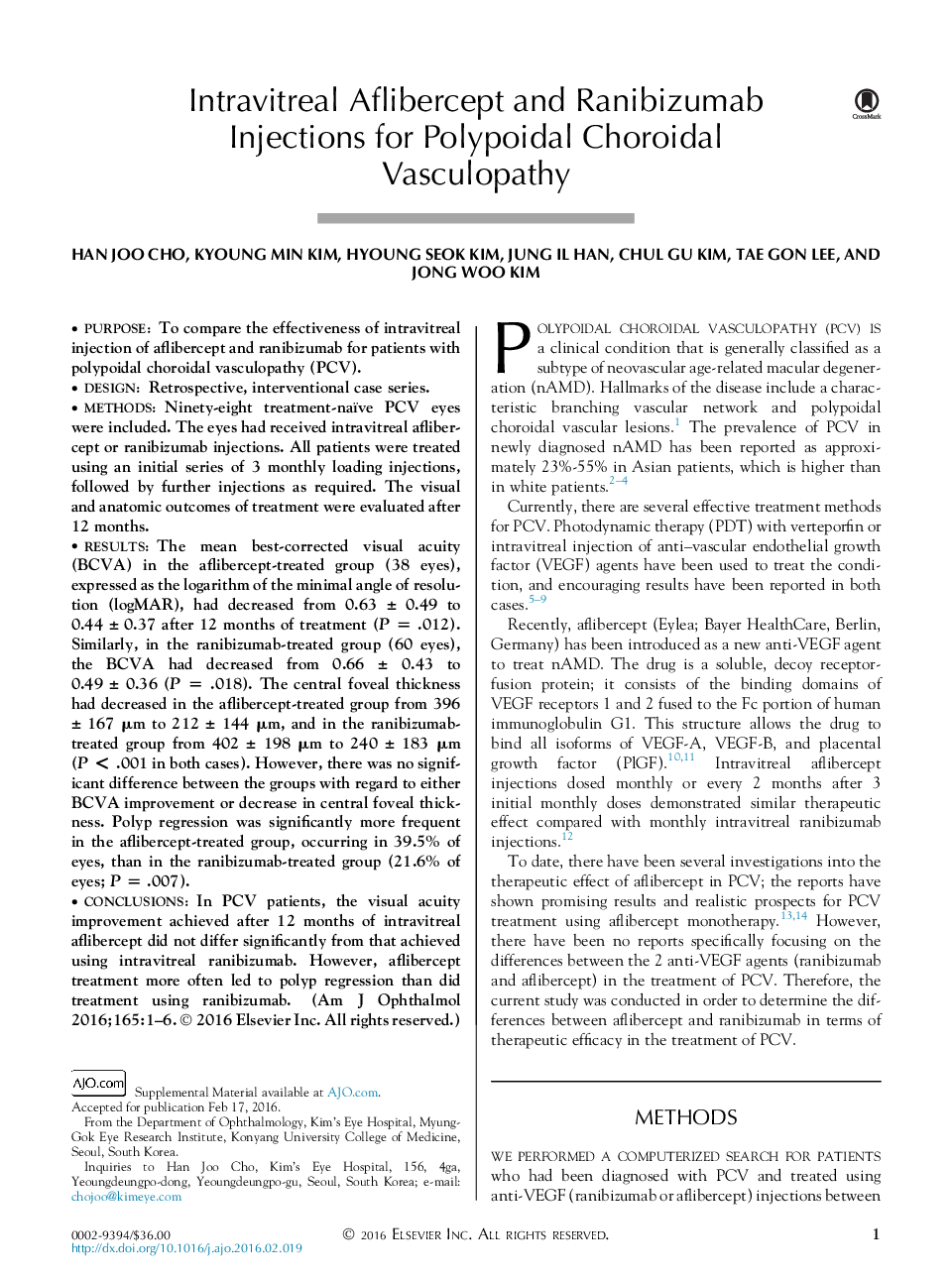| Article ID | Journal | Published Year | Pages | File Type |
|---|---|---|---|---|
| 6194927 | American Journal of Ophthalmology | 2016 | 6 Pages |
PurposeTo compare the effectiveness of intravitreal injection of aflibercept and ranibizumab for patients with polypoidal choroidal vasculopathy (PCV).DesignRetrospective, interventional case series.MethodsNinety-eight treatment-naïve PCV eyes were included. The eyes had received intravitreal aflibercept or ranibizumab injections. All patients were treated using an initial series of 3 monthly loading injections, followed by further injections as required. The visual and anatomic outcomes of treatment were evaluated after 12 months.ResultsThe mean best-corrected visual acuity (BCVA) in the aflibercept-treated group (38 eyes), expressed as the logarithm of the minimal angle of resolution (logMAR), had decreased from 0.63 ± 0.49 to 0.44 ± 0.37 after 12 months of treatment (P = .012). Similarly, in the ranibizumab-treated group (60 eyes), the BCVA had decreased from 0.66 ± 0.43 to 0.49 ± 0.36 (P = .018). The central foveal thickness had decreased in the aflibercept-treated group from 396 ± 167 μm to 212 ± 144 μm, and in the ranibizumab-treated group from 402 ± 198 μm to 240 ± 183 μm (P < .001 in both cases). However, there was no significant difference between the groups with regard to either BCVA improvement or decrease in central foveal thickness. Polyp regression was significantly more frequent in the aflibercept-treated group, occurring in 39.5% of eyes, than in the ranibizumab-treated group (21.6% of eyes; P = .007).ConclusionsIn PCV patients, the visual acuity improvement achieved after 12 months of intravitreal aflibercept did not differ significantly from that achieved using intravitreal ranibizumab. However, aflibercept treatment more often led to polyp regression than did treatment using ranibizumab.
